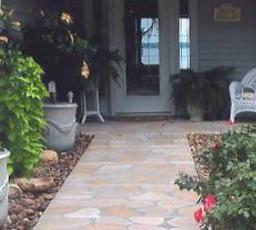Universal design refers to building design elements that make a home accessible to all people, regardless of age or ability. It is most common in new buildings, and looking ahead to future adaptability is part of the plan. The intent is for the accessible design elements to be convenient and comfortable but transparent... many people wouldn't even know they were there.

Universal design is also often convenient for families with children. For example, no steps not only makes accessibility easy for people in a wheelchair or using a walker, it is also great for young children.
Another example of the difference between universal design and aging-in-place remodeling could be in the bathroom... aging-in-place remodeling might expand the size of the bathroom by borrowing from another room and add grab bars. Universal design might make it bigger to begin with, including a wider doorway. It might also include blocking inside the walls so that grab bars could easily be added later even if they are not needed at the present time.
Here are some examples of common universal design elements that are also often incorporated into Aging-in-Place remodels...
- No steps to get into the home
- Living, sleeping and bathroom areas all on one level
- Wide doorways and hallways... not only let wheelchairs pass through, also make it easy to move things around, including furnitue
- Extra floor space
- Floors, tubs and showers with non-slip surfaces and grab bars
- Handrails on steps
- Good lighting
- Lever door handles and rocker light switches
- Drawer dishwasher, microwave, dinnerware storage systems

More and more people are asking for universal design elements in their homes, regardless of age. Many of us know someone who is disabled or have a family member who is disabled, and many of us will experience some sort of temporary disability at some point in our lives... be it a broken leg or hip... or as in my case, a fractured pelvis. I never gave the steps in our home a second thought until I wondered how I was going to get back into our home after fracturing my pelvis!
Universal design is a paradigm shift in how we think, design and build homes, design that is accessible and adaptable for everyone... not just for aging in place.
Sharlene Hensrud, RE/MAX Results - Email- Baby Boomer Realtor
RELATED POSTS

